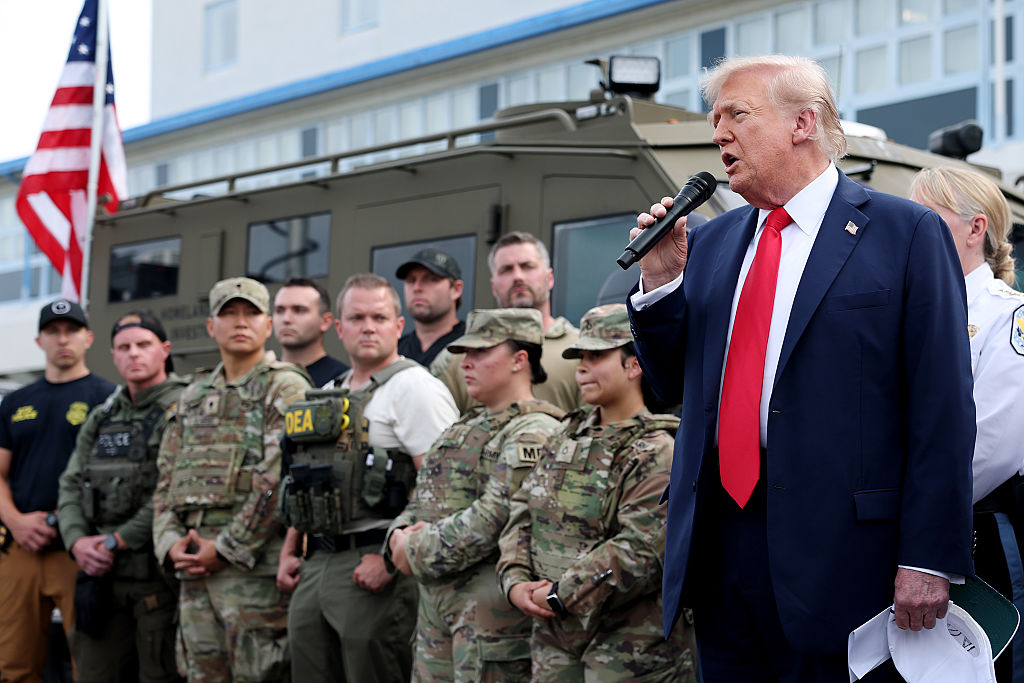Supreme Court requests further information in case concerning Trump’s deployment of National Guard


The Supreme Court on Wednesday afternoon asked the litigants in the challenge to President Donald Trump’s effort to deploy the National Guard to Illinois to file supplemental briefs addressing the interpretation of the law on which Trump relied in his Oct. 4 memorandum calling up the National Guard.
Trump cited efforts “to disrupt the faithful enforcement of Federal law” by “violent groups” that “have sought to impede the deportation and removal of criminal aliens through violent demonstrations, intimidation, and sabotage of Federal operations.” Based on his determination that “the regular forces of the United States are not sufficient to ensure the laws of the United States are faithfully executed, including in Chicago,” he “call[ed] into Federal service at least 300 members of the Illinois National Guard.”
The state of Illinois and the city of Chicago went to federal court in Chicago, seeking to block Trump’s deployment of the National Guard. U.S. District Judge April Perry on Oct. 9 issued a temporary restraining order prohibiting Trump “from ordering the federalization and deployment of the National Guard of the United States within Illinois” for two weeks; she later extended that order. Perry explained in an opinion accompanying her order that, among other things, the Trump administration had “made no attempt to rely on the regular forces before resorting to federalization of the National Guard,” and it had not contended “(nor is there any evidence to suggest) that the President is incapable with the regular forces of executing the laws.”
The U.S. Court of Appeals for the 7th Circuit upheld the portion of Perry’s order barring the deployment of the National Guard. That prompted the Trump administration to come to the Supreme Court on Oct. 17, asking the justices to intervene. U.S. Solicitor General D. John Sauer told the justices that Perry’s order “cause[s] irreparable harm to the Executive Branch by countermanding the President’s authority as Commander in Chief, jeopardizing the lives and safety of DHS officers, and preventing the President and the Secretary of War from taking reasonable and lawful measures to protect federal personnel from the violent resistance that has persisted in the Chicago area for several months.”
In a brief opposing the government’s request, the city and state urged the court to leave Perry’s order in place. Illinois Solicitor General Jane Notz told the justices that “the unnecessary deployment of military troops, untrained for local policing, will escalate tensions and undermine the ordinary law enforcement activities of state and local entities, which would need to divert resources to maintain safety and order.”
Although the court had directed the challengers to respond in just three days, suggesting that it might act quickly, nine days passed before the justices issued an order in the case – but they did not rule on the government’s request. Instead, they ordered both the Trump administration and the challengers to file new briefs discussing whether, for purposes of the federal law on which Trump relied to call up the National Guard – which allows him to do so when (among other things) he cannot “with the regular forces … execute the laws of the United States” – “the term ‘regular forces’ refers to the regular forces of the United States military, and, if so, how that interpretation affects the operation” of the law.
The new briefs, the court said, should be no more than 15 pages long and should be filed by Nov. 10, with 10-page reply briefs to follow a week later – a much less expedited timeframe than the court had set for the original briefing.
Posted in Court News, Emergency appeals and applications
Cases: Trump v. Illinois